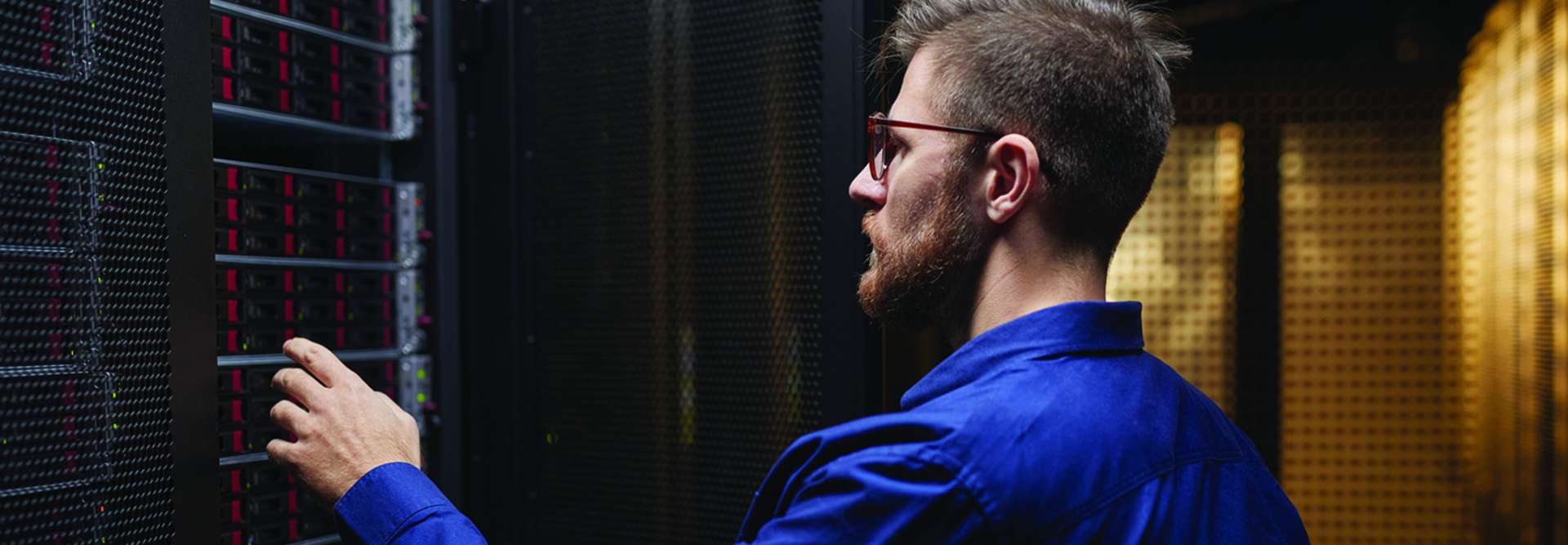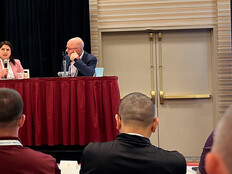The Department of Defense needs to address its fragmented IT infrastructure if it wants to achieve its vision of seamless data exchange across all branches, according to Vertiv’s director of federal sales.
Chris Turner says DOD must build resilient, redundant systems to achieve interoperability among diverse military services.
DOD’s Joint All-Domain Command and Control program and push toward a unified network are steps in the right direction, but siloes persist, and the tactical edge poses challenges.
“A big program will have one infrastructure solution, but a local decision might be made for the base next door,” Turner says. “One data center setup can be very different versus another, smaller data center right across the street. There’s no standardization.”
EXPLORE: CDW and Vertiv can help your agency update critical infrastructure.
The Benefits of Infrastructure Modernization in the Age of AI
Modernized infrastructure offers reliability and improved management capabilities, especially for remote management. Systems will be interoperable and standardized, Turner says.
Artificial intelligence is increasing demands on the military’s technology infrastructure. Ideally, improved infrastructure will address those needs as well.
“Today, they’re talking about kilowatts per rack in numbers that you used to see for an entire data center, so you have to have some scalability built into your infrastructure,” Turner says.
Modernized solutions should give DOD the ability to adapt to ever-changing requirements.
Click the banner below to begin building modern IT architectures.
Vertiv’s Turnkey Approach to Addresses Heavier Workloads
Vertiv offers critical infrastructure and services for data centers and communication networks and can help DOD modernize rapidly. With DOD’s IT teams stretched thin, Vertiv can ease the transition by offering a turnkey approach that includes both planning and implementation.
“From power and cooling to management and distribution, Vertiv has best-in-breed, end-to-end solutions, whether you’re building a new data center or expanding an existing data center,” Turner says. “That includes the new installation and removal of old equipment, if necessary.”
In particular, power and cooling require a higher level of expertise than in the past. What used to be an afterthought has become a front-and-center concern, with the infrastructure poised to run heavier workloads moving forward.
“For a federal customer, 3 to 5 kilowatts per rack used to be typical,” Turner says. “Now it can be 30, 60, 100 kilowatts, so you have to pay close attention to the power and cooling.”
DISCOVER: DOE is building a formidable, integrated, scientific AI system.
With an eye toward accelerated outcomes, Vertiv works through channel partners such as CDW Government.
“Those partners already have federal contracts set up. They have a vehicle already in place,” Turner says. “This is an ‘easy button’ for them.”
Prioritizing Sites and Launching Pilots With Equipment Vendors
As DOD moves toward unified communications, infrastructure standardization supports interconnectivity. DOD’s military leaders and IT professionals can take steps now to move in that direction.
The first step is prioritizing sites: Consider the places where infrastructure is likely to have the most direct impact on mission, and plan accordingly. It’s important to incorporate end-user readiness into planning.
LEARN MORE: DCaaS gives agencies data flexibility.
“You want to make sure that the users are properly trained to operate and maintain these modernized systems,” Turner says.
DOD should seek expert insights from the equipment vendors to scope out its modernization effort.
“What does your infrastructure look like today? Where do you want to be?” Turner says. “Industry experts can put together different scenarios to achieve the results you’re looking for.”
When it’s time to move forward, military leaders should start with a proof of concept.
“Do a pilot project to test things out,” Turner says. “Validate the solution under real-world conditions, and set up some metrics for success, including clear key performance indicators around things like uptime, cyber resilience and remote management.”
Brought to you by:














